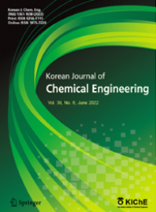Overall
- Language
- English
- Conflict of Interest
- In relation to this article, we declare that there is no conflict of interest.
- Publication history
-
Received November 9, 2022
Accepted September 16, 2023
-
 This is an Open-Access article distributed under the terms of the Creative Commons Attribution Non-Commercial License (http://creativecommons.org/licenses/bync/3.0) which permits
unrestricted non-commercial use, distribution, and reproduction in any medium, provided the original work is properly cited.
This is an Open-Access article distributed under the terms of the Creative Commons Attribution Non-Commercial License (http://creativecommons.org/licenses/bync/3.0) which permits
unrestricted non-commercial use, distribution, and reproduction in any medium, provided the original work is properly cited.
Most Cited
Janus Silica Nanoparticles at Three-Phase Interface of Oil–Calcite–Electrolyte Water: Molecular Dynamics Simulation
Abstract
Nanofl uid injection into oil reservoirs is a novel chemical enhanced oil recovery (EOR) method and has been the subject
of many researches in recent years. Despite its increasing applications, there is not enough information on the mechanisms
and microscopic aspects of nanoparticle performance in EOR processes. Among nanoparticles, Janus nanoparticles (JNPs),
which have two distinct hydrophilic and hydrophobic sides, can play an eff ective role in oil recovery enhancement applications.
In the present study, molecular dynamics (MD) simulations were performed to provide a molecular-scale insight into
the working mechanisms of silica Janus nanoparticles in oil recovery enhancement by considering the presence of sodium,
chlorine, magnesium and sulfate ions. The calcite surface interacts with the mixture of heptane, decane, and toluene as the
oil phase. Based on the simulation results, the mechanism of oil detachment from the calcite surface involves several steps.
Due to the electrostatic interactions between the nanofl uid and the calcite, the formation of a water channel towards the
calcite surface begins, and the nanofl uid reaches and spreads over the calcite surface, which is infl uenced by two factors:
hydrogen bonds between water and calcite; the presence of ions in the nanofl uid, which can increase the hydrophilicity of
the calcite surface. Thus, the oil molecules remain as a droplet on the rock surface. Subsequently, the JNPs approach to the
oil–water interface near the calcite surface and push the oil droplet upward so that the oil phase completely detaches from the
surface. The presence of ionic compounds around the JNPs increases their electrostatic interactions with each other and also
increases the probability agglomeration of JNPs, which is a negative factor. On the other hand, they increase the electrostatic
interactions of JNPs with calcite, which is a positive factor. Therefore, it is necessary to choose the optimal concentration
of the ionic compounds in the injected nanofl uid. According to the simulation results, JNPs could increase the viscosity of
the water phase by 60% and reduce the surface tension of water–oil by 33%. Under the reservoir temperature and pressure
conditions, the diff usion coeffi cient of 1nm JNPs has increased from 3.33 × 10 –10 to 6.67 × 10 –10 m 2 /s. The results of this
study may be useful for designing favorable conditions for nanofl uid injection in the EOR applications.

